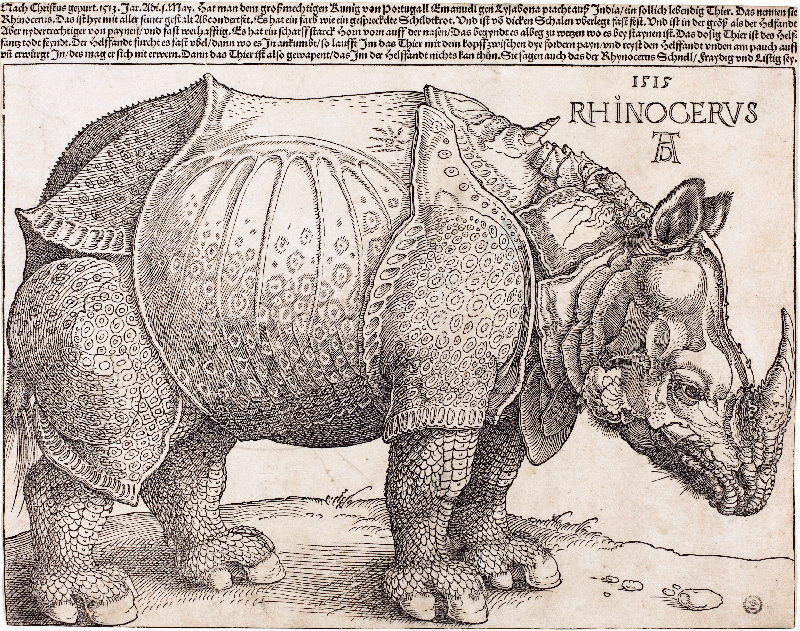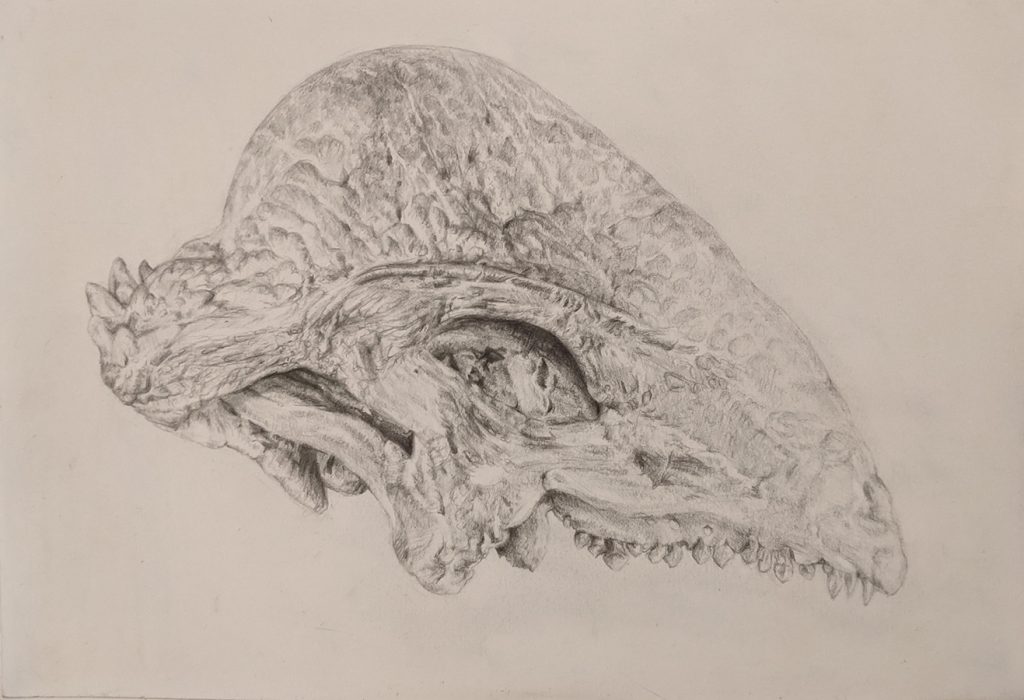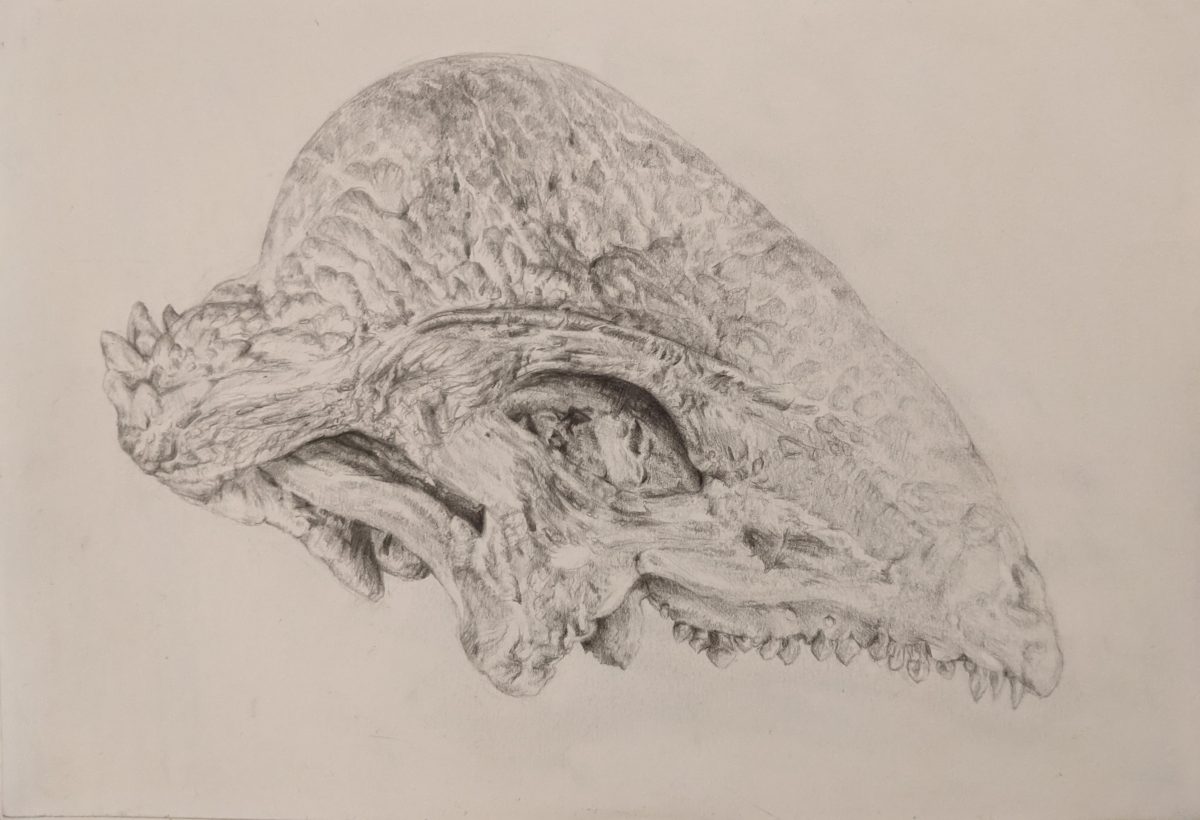During the summer of 2020, I thought it would be fun to explore my interest in the natural history of our planet and its many mysteries, by enrolling in a few (three, to be exact) online courses. I have been interested in myths and legends like sea monsters and their symbolism in different cultures for a long time, as well as the scientific knowledge behind them.
After researching a few courses online, I signed up for Dino 101: Dinosaur Paleobiology and Paleontology: Ancient Marine Reptiles at The University of Alberta, Canada, which is currently running a number of Massive Open Online Courses (MOOCS).
Since their extinction, the fossilized remains of giant dinosaurs and ancient marine reptiles have taken on an almost mythical status and have understandably inspired generations.
I find it interesting how people interpret any new species using their imagination and pre-held associations; I am reminded of a woodcut that Albrecht Dürer produced based on someone’s description of an armoured rhinoceros:

I found the University of Alberta’s courses were fascinating and well presented, with generous resources to present paleobiology in a dynamic new way. They were great foundations to practice and learn scientific critical thinking.
Here is a brief overview of the courses at the University of Alberta.
Dino 101: Dinosaur Paleobiology
The world’s first paleobiology MOOC, Dino 101 is led by Dr. Phil Currie, Curator of Dinosaurs and Professor of Paleobiology at the University of Alberta, alongside former MSc student of Paleontology, Betsy Kruk. The course consists of twelve lessons covering the Mesozoic era (Triassic, Jurassic, and Cretaceous periods). Learn more about non-avian dinosaurs such as Stegosaurus, Spinosaurus, long-necked sauropods like Brachiosaurus, and predatory Therapods like Allosaurus, Velociraptors, and Tyrannosaurus Rex. Lessons are delivered from museums, fossil-preparation labs, and dig sites, highlighting the rich resources of Alberta. To aid their learning, students can build a skeleton during the course, and use a fossil viewer.
Topics include:
- Anatomy
- Eating
- Locomotion
- Growth
- Environmental and behavioural adaptations
- Origins and extinction.
Paleontology: Ancient Marine Reptiles
This is a four-lesson MOOC presented by Dr. Scott Persons, a former Ph.D. student of Evolution and Systematics at the University of Alberta. The course assesses the diversity, adaptations, convergence, and phylogenetic relationships of extinct marine reptiles, and the changes that occur when air-breathing terrestrial animals return to the water. The course makes many comparisons to extant (living) reptiles and animals, giving students a comprehensive introduction to animal biology.
Fun fact: Ancient marine reptiles are NOT dinosaurs!
The course focused on the following extinct marine reptiles and how they solved the aquatic problem such as movement, sight, and hearing:
- Ichthyosaurs: highly specialized carnivorous aquatic reptiles from early Triassic to mid-Cretaceous; similar in shape to a dolphin or bluefin tuna, they were among the fastest aquatic creatures to have ever lived.
- Sauropterygians: Covers diverse species from the late-Triassic to end-Cretaceous reptiles such as the Turtle shaped placodonts with crushing teeth, to the long-necked elasmosaurus and large-jawed pliosaurs.
- Mosasaurs: As featured in the film Jurassic World, this group was among the largest and most powerful marine predators to have ever lived. They ruled the seas in the Cretaceous period and are the ancestors of snakes and monitor lizards.
Thank you to the scientists who took the time to deliver the courses in such a fun and engaging way.
Thank you also to Dr. Phil Currie for suggesting I draw the pictured dinosaur skull of their most famous specimen, a small pachycephalosaurid named Stegoceras that was first discovered in Alberta. Its domed skull, horns, and teeth have been remarkably well preserved, I enjoyed capturing the various textures in pencil:

